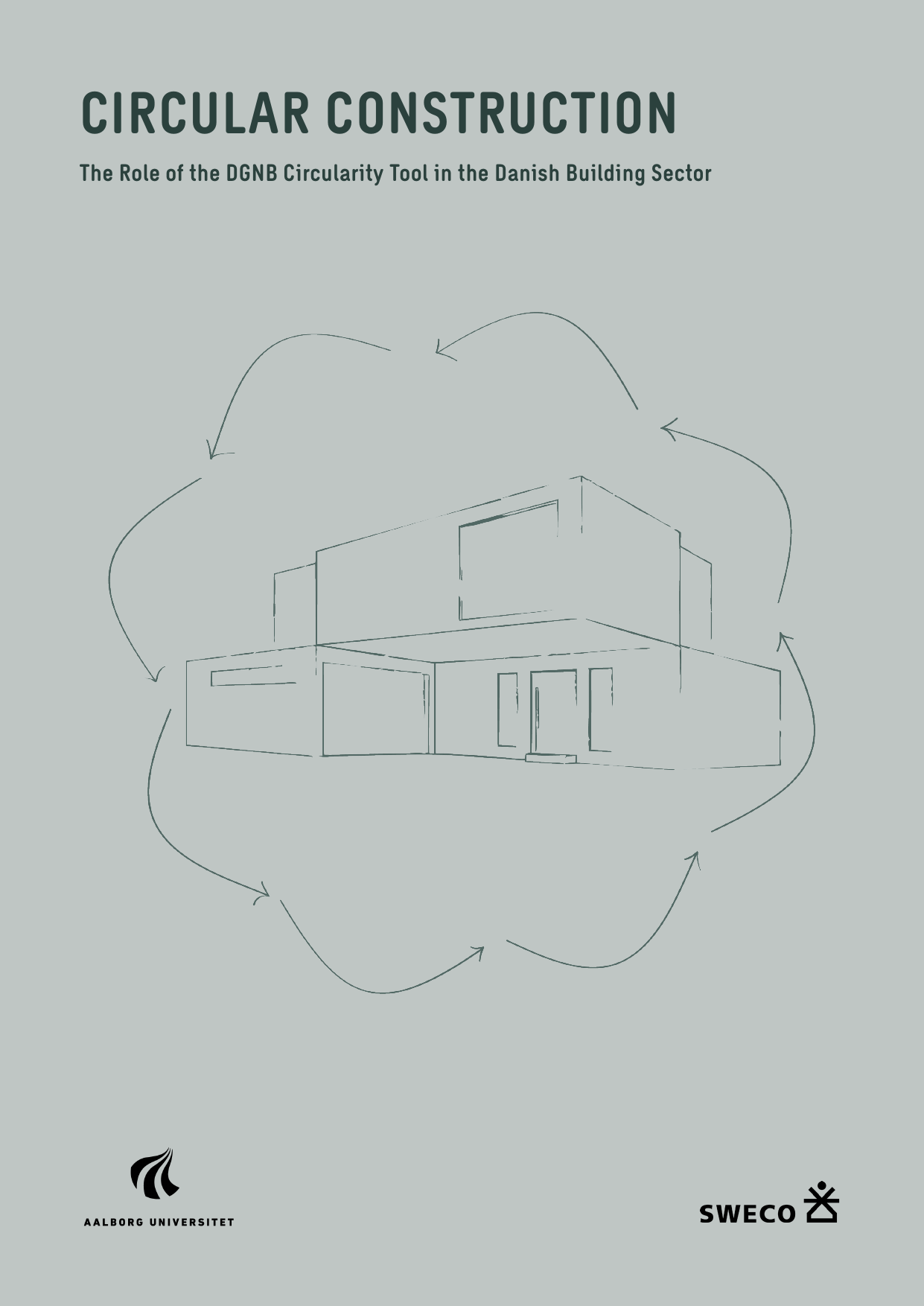
Circular Construction - The Role of the DGNB Circularity Tool in the Danish Building Sector: The Role of the DGNB Circularity Tool in the Danish Building Sector
Term
4. Term
Education
Publication year
2025
Submitted on
2025-05-27
Pages
67
Abstract
In Denmark’s construction sector, circularity is gaining momentum, but what it actually means and how to implement it remains unsettled. One response to this challenge is the DGNB Circularity Tool: a recent addition to the Danish DGNB certification system that quantifies circularity through a material-based index. While it offers structure and comparability, it also shapes the very definition of circularity by making certain strategies visible and others invisible. Through real case studies and project data from a collaboration with Sweco Danmark and interviews with practitioners, this thesis traces how the tool works in practice, what it gives value, what it overlooks, and how it affects roles and decisions across the sector. Using the lens of Actor-Network Theory, it shows how the tool translates complex goals into measurable values, and how these values influence design strategies, project priorities, and professional boundaries. What becomes clear is that the DGNB Circularity Tool supports a particular version of circularity, quantifiable, standardized, and often limited to material inputs. Still, when used critically and in combination with broader design and institutional strategies, it can serve as a useful device for navigating circular ambitions. Rather than rejecting or idealizing the tool, the aim is to better understand what it does, and how to work with (and around) it to support more meaningful transitions.
In Denmark’s construction sector, circularity is gaining momentum, but what it actually means and how to implement it remains unsettled. One response to this challenge is the DGNB Circularity Tool: a recent addition to the Danish DGNB certification system that quantifies circularity through a material-based index. While it offers structure and comparability, it also shapes the very definition of circularity by making certain strategies visible and others invisible. Through real case studies and project data from a collaboration with Sweco Danmark and interviews with practitioners, this thesis traces how the tool works in practice, what it gives value, what it overlooks, and how it affects roles and decisions across the sector. Using the lens of Actor-Network Theory, it shows how the tool translates complex goals into measurable values, and how these values influence design strategies, project priorities, and professional boundaries. What becomes clear is that the DGNB Circularity Tool supports a particular version of circularity, quantifiable, standardized, and often limited to material inputs. Still, when used critically and in combination with broader design and institutional strategies, it can serve as a useful device for navigating circular ambitions. Rather than rejecting or idealizing the tool, the aim is to better understand what it does, and how to work with (and around) it to support more meaningful transitions.
Documents
